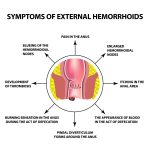



Piles are swollen blood vessels in the anal area, which can cause pain, itching, and bleeding. They can be treated with medications, lifestyle changes, or surgery.
A fistula is an abnormal connection between the anal canal and the skin near the anus, often caused by infection. Surgery is needed to treat it.
Laser treatment has revolutionized the management of conditions such as piles, fissures, and fistulas. Its minimally invasive nature, precision, decreased pain, minimal bleeding, prompt healing, and decreased chances of complications make it a compelling alternative to traditional surgery.
Dr Sanjitha Shampur is an expert in both, Laser and traditional surgical procedures.
Anorectal surgeries are commonly done using minimally invasive techniques, including lasers or laparoscopic methods, to reduce pain and recovery time.
A pilonidal sinus is a small tunnel under the skin near the tailbone that can become infected. Surgery is usually required to remove the sinus.
While rare, some anorectal problems may recur if the underlying condition is not fully treated. Proper care and hygiene are important post-surgery.
Recovery time can vary from 1-4 weeks, depending on the type of surgery performed and the patient’s overall health.
We are very happy with the experience. Excellent doctor. She is very helpful and listens to the patients . Very happy with the results! Highly recommend.
I had gone for hernia repair surgery to Dr Sanjitha and the doctor was very kind and patient throughout.I have recovered fast and completely under her care ...would highly recommend.
Dr.Sanjitha was a very efficient, friendly doctor.she politely replied to all my queries.her explanation was very clear.very much satisfied with her service.
Very hospitable and soft spoken..glad to have been treated by her.
My mother was diagnosed with cellulitis and her hand was swollen and she experienced a lot of pain. Upon recommendation from our general physician, we consulted Dr. Sanjitha at Apollo Jayanagar. We had a great experience with her. At the very beginning she made my mother comfortable in the way she interacted with her. Following a very thorough examination she recommended certain exercises and medications for my mother which helped her greatly. Her swelling decreased in a week’s time and the pain has also come down significantly. Most importantly there was no surgery required. Her reassurance during this entire phase and the confidence she gave to all of us was noteworthy. Highly recommend Dr Sanjitha.
Dr. Sanjitha perfomed my surgery and treatment was done with utmost care. She explained the issue in detail to us and made us aware of the options available for treating the same. I was diagnosed with abscess with pain and feverish symptoms. She completed the surgery very professionally and took great care to ensure that there was very minor/minimal scar arising out of surgery. She personally completed every dressing session post surgery which was for about a month and very closely monitored the progress of my health and healing of the wound. I was very comfortable to approach her with my queries and seek help. I thank her for her efforts and helping me recover fast.
Click Here to View Google Map

Website Designed by HappiMed